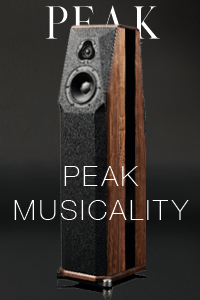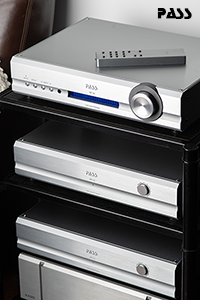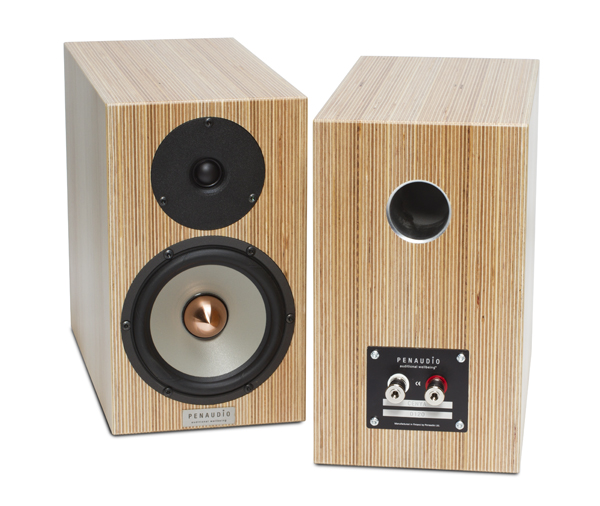 Reporting on the Porsche/Burmester event for Issue 46’s cover story put me at a dinner table with a new group of writers. Instead of the usual cronies from high-end audio, I encountered a pack of automotive journalists. A staff member from Automobile magazine commented that, on a recent outing with a handful of incredibly wealthy car collectors, he asked everyone the same question: What is the most fun car you own? He became fascinated to discover that, even though the owners all possess stables of exotic machinery, five of the six respondents named the Mini Cooper S Convertible.
Reporting on the Porsche/Burmester event for Issue 46’s cover story put me at a dinner table with a new group of writers. Instead of the usual cronies from high-end audio, I encountered a pack of automotive journalists. A staff member from Automobile magazine commented that, on a recent outing with a handful of incredibly wealthy car collectors, he asked everyone the same question: What is the most fun car you own? He became fascinated to discover that, even though the owners all possess stables of exotic machinery, five of the six respondents named the Mini Cooper S Convertible.
Many of my audiophile buddies express a similar sentiment concerning loudspeakers. There’s something enchanting about a pair of small speakers in a modest-sized room. Often, the famous LS3/5A enters the conversation. However, as magic as it is when paired with small-scale music, that speaker does not rock. But greatness is possible in a small box. Modern drivers, computer analysis, and crossover technology make such a goal all the more attainable.
Enter the Penaudio Cenya. Taking up only half a cubic foot (6.4 x 11.2 x 12.6 inches/163 x 280 x 315mm) of space, the tiny two-way uses a 6-inch Seas Excel woofer and 3/4-inch Seas soft-dome tweeter in a ported enclosure. Don’t be scared by the $4,000 price. Small enclosures and understated elegance are Penaudio hallmarks, and the cost is warranted.
For those seeking wife-acceptance factor, look no further. The Cenyas integrate with practically any décor. Yes, getting the best bass response requires a pair of stands with high mass, and placing the tweeters near ear height is essential. A pair of sand-filled Sound Anchors stands works perfectly in both my listening rooms. My smaller 11 x 17-foot living room provides slightly more bass reinforcement, but surprisingly, does not offer the big sound of my dedicated room.
Simple Setup
Setting up the speakers by ear resulted with the speakers landing in the classic equilateral arrangement. In my 16 x 25-foot listening room, the Cenyas are almost seven feet out in the room on the long wall, and seven feet apart. Approximately 15 degrees of toe-in yields the best balance between imaging and high-frequency smoothness, and yes, the Cenyas boast excellent off-axis response. Placed well away from sidewalls, these speakers image like panels. With the last octave of bass response diminished, the Cenyas are easier to position, particularly since they don’t excite room resonances in the manner achieved by a speaker that goes down to the mid-20hz region.
In terms of matching, the 30wpc Unison Research S6 tube integrated amplifier and its deep, rich presentation complements the Cenya’s large soundstage. Unlike the Penaudio Serenades I used for a few years, and which never really matched with a tube amplifier, the Cenyas perform admirably with glass. Given their 86db sensitivity rating, I suggest a minimum of 30wpc, although an amplifier in the 45-70wpc rating is even better. Select tube amplifiers at my disposal from CJ, Audio Research, PrimaLuna, and Grant Fidelity all reveal a warm, friendly sound via the Cenyas, with excellent bass control and supple high end.
However, power rules the day with these mighty marvels, and the heavens part upon inserting an Audio Research REF 150 into the system. Remember, though, that power alone doesn’t get the job done. Think quality. Trying a few budget, high-powered Class D amplifiers makes for a lifeless presentation. The Cenyas claim a very neutral, natural, and lifelike tonal balance—but also offer high resolution. Hence, distinctions between different source components are readily discerned.
Switching between the ARC REF 150, Burmester 911 mk. 3, and Octave Jubilee monoblocks, it’s as effortless to pinpoint the particular characteristics between these top-tier amplifiers as it is when they’re feeding speakers that cost considerably more. Clearly, something special is going on in Finland. Chalk it up to Penaudio designer Sami Pentilla, who loves to rock out. You’ll never hear Patricia Barber in his room at a hi-fi gathering. At this year’s Consumer Electronics Show, as we listened to Rammstein loudly in his space, he smiled and said, “My speakers must have natural sound, but they have to rock.”
Mad Bass Skills
Don’t be thrown off by that small woofer. Given the size of the speaker from which it emanates, the bass line in the title track from Big Head Todd and the Monsters’ Sister Sweetly album produces enormous bass of almost-shocking dimensions. No one-note wonder, the Cenya does equally well with acoustic bass. Scott LaFaro’s bass playing on Bill Evans’ classic Portrait in Jazz provides elegant lines that often feel more like lead runs than backdrops. The Cenyas excel at capturing the texture, as well as the body, of the acoustic bass parts.
Torturing the Cenyas via the massive beats in Madonna’s latest MDNA prove fruitless until the mighty Burmester 911 amplifier starts working up a sweat. With 350 watts per channel on tap, I was able to produce that awful bottoming sound from the woofer cones. Note, however, that this came at beyond-prudent volume levels. Big synth bass from The System’s “Don’t Stop This Groove,” as well as from a few other 80s favorites, is also rendered with so much weight that you won’t hanker for a subwoofer. Ok, maybe when you blast Daft Punk’s Tron: Legacy Revisited, it’s not a bad idea to grab one. Fortunately, the JL Audio Gotham in-wall subwoofer seamlessly mates with the Cenyas, making for a rather stealthy system.
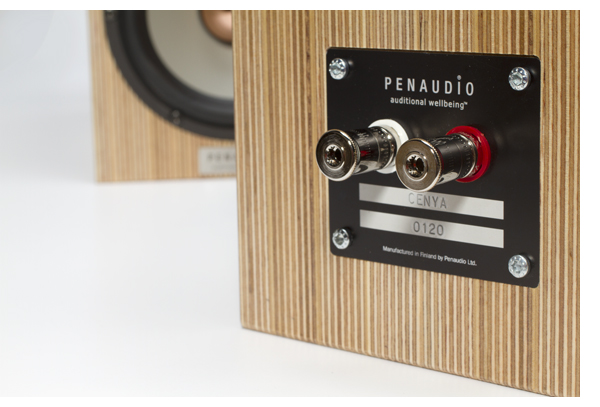 Mighty Mids
Mighty Mids
Dandy as the Cenyas show with varied program material, midrange remains the mini-monitors’ strong suit. Emphasis is focused on defined placement of musicians and instruments within a soundstage. Ry Cooder’s I, Flathead features a live feel. When Cooder briskly strums his guitar on “My Dwarf is Getting Tired,” you can hear the drumheads rattle. These speakers reproduce the midband in such a transparent way, you’ll forget about your visions of ESLs. And I say this as a happy owner of Quad 57s; the Cenyas have the juice.
All the best audiophile clichés apply to these Penaudio speakers. They paint an enormous sonic canvas extending well beyond the speaker boundaries. Yes, you’ll swear you are listening to larger speakers. Vide, Mobile Fidelity’s brilliant new remaster of Gram Parsons’ GP. The Cenyas capture the pace and air present within this sparse recording. The original CD is flat and lifeless, but the decay-rich MoFi disc feels lush. Vide, the baritone sax on “Cry One More Time For You” leaps right out in front. And, heard via the Cenyas, Parsons and Emmylou Harris’ duet on “We’ll Sweep Out The Ashes in the Morning” gives equal weight to both singers. Lesser speakers leave Harris’ voice fading into the mix.
Dazzling Dynamics
The 24/96 file of Elton John’s Madman Across The Water sounds stunning through the Cenyas. When the barrage of horns kicks in at about 1:37, I got pinned back on the couch, amazed at the drive they muster. Wow, these speakers rock. Transitioning from the slower first half of Jack White’s “Take Me With You When You Go” from Blunderbuss to the song’s raucous second half is painless. White’s signature guitar sound is also reproduced with plenty of grit and texture.
Thanks to the Cenyas’ wide dynamic contrast, the worst recordings now become much more palatable. Even Don Johnson’s Heartbeat sounds pretty good. (Fess up. I know you still have that CD from the 80s.) Getting down with the self-titled Grinderman album, these speakers give up the good stuff the second you hit “play.” The first track, “Get it On,” opens with Nick Cave barking over a larger-than-life distorted guitar out of phase with the rest of the instruments. The Cenyas don’t lose their poise even when cranking this record. The louder you play it, the better it sounds, with the mad guitars burrowing their way into your soul.
Indeed, the speakers deliver an abundance of dynamic contrast and low-level detail, making them just as easy to listen to at low volume. And, as I mentioned earlier, they possess a very natural tonal balance. Violin, banjo, and acoustic bass remain distinctly separate on the title track of Steve Martin’s The Crow: New Songs For Five String Banjo, retaining all the textural properties that make these stringed instruments unique. The violin is particularly tough to get right, yet the Cenyas handle it with aplomb.
Get On Board
The Penaudio Cenya is an absolute delight, no matter the source material. These speakers are limited only by the quality of the electronics with which you mate them. Granted, the Cenyas are not merciless. Your system won’t suck with a $600 integrated amplifier if that’s what you can afford. However, the speakers will constantly improve with better gear, should you jump on the high-speed train to audiophilia.
Fuel the Cenyas with the best electronics you can afford, and you will not be disappointed. It’s not unlike handling a high-performance turbocharged car. If you put low-octane gasoline in the tank, the experience will still be good, but the engine-management system will cut the amount of horsepower delivered to the rear wheels.
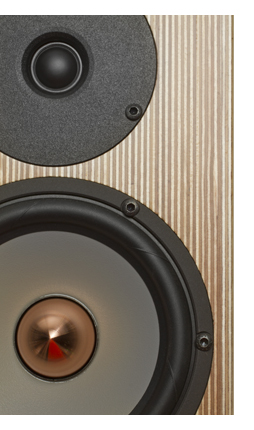 Penaudio Cenya Loudspeaker
Penaudio Cenya Loudspeaker
MSRP: $4,000
www.penaudio.fi (Factory)
www.tempohighfidelity.com (US Importer)
Peripherals
Preamplifier Burmester 011
Power Amplifier Burmester 911 mk. 3, Audio Research REF 150
Digital Source dCS Debussy DAC/Paganini Clock
Analog Source VPI Classic 1/Lyra Kleos/ARC REF Phono 2
Cable Cardas Clear
Accessories SRA Scuttle rack, Furutech DeStat, DeMag, Audio Desk Systeme record cleaner



 Reporting on the Porsche/Burmester event for Issue 46’s cover story put me at a dinner table with a new group of writers. Instead of the usual cronies from high-end audio, I encountered a pack of automotive journalists. A staff member from Automobile magazine commented that, on a recent outing with a handful of incredibly wealthy car collectors, he asked everyone the same question: What is the most fun car you own? He became fascinated to discover that, even though the owners all possess stables of exotic machinery, five of the six respondents named the Mini Cooper S Convertible.
Reporting on the Porsche/Burmester event for Issue 46’s cover story put me at a dinner table with a new group of writers. Instead of the usual cronies from high-end audio, I encountered a pack of automotive journalists. A staff member from Automobile magazine commented that, on a recent outing with a handful of incredibly wealthy car collectors, he asked everyone the same question: What is the most fun car you own? He became fascinated to discover that, even though the owners all possess stables of exotic machinery, five of the six respondents named the Mini Cooper S Convertible. Mighty Mids
Mighty Mids Penaudio Cenya Loudspeaker
Penaudio Cenya Loudspeaker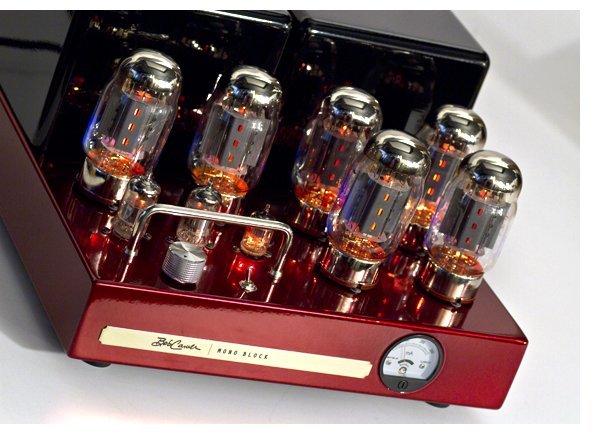 Throughout his career, Bob Carver has made several legendary products and, like most great artists, stirred up controversy in the process. His new line of tube amplifiers aren’t just brilliant, they’re reasonably priced. For those wanting the “Made in America” badge, these crimson beauties—along with every other Carver amplifier—are built by hand in Lexington, using point-to-point wiring techniques.
Throughout his career, Bob Carver has made several legendary products and, like most great artists, stirred up controversy in the process. His new line of tube amplifiers aren’t just brilliant, they’re reasonably priced. For those wanting the “Made in America” badge, these crimson beauties—along with every other Carver amplifier—are built by hand in Lexington, using point-to-point wiring techniques.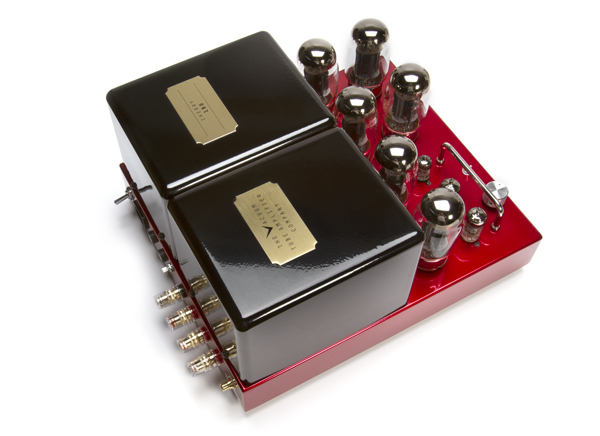 The Whole Enchilada
The Whole Enchilada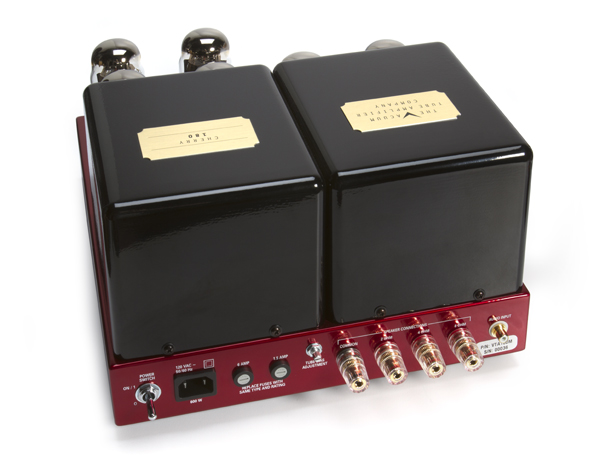 Award Winning Performance
Award Winning Performance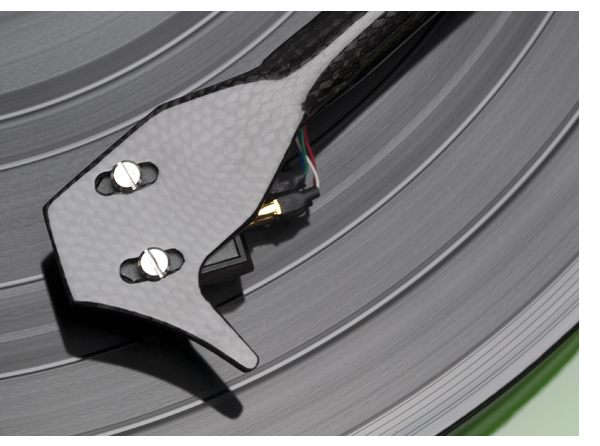 Back in the Batcave
Back in the Batcave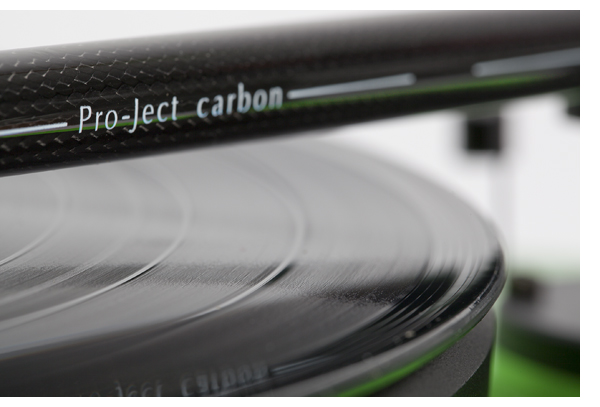 No Excuse Not To Spin
No Excuse Not To Spin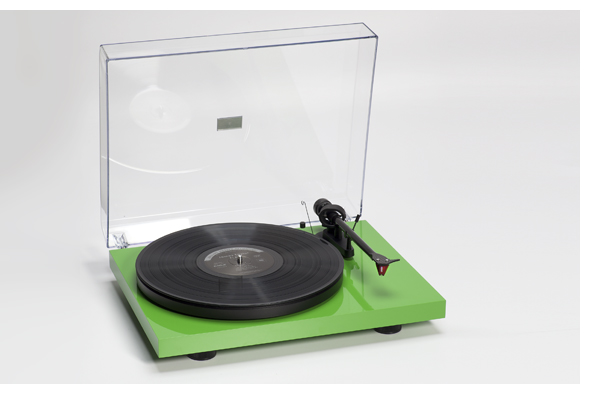 Pro-Ject Debut Carbon Turntable
Pro-Ject Debut Carbon Turntable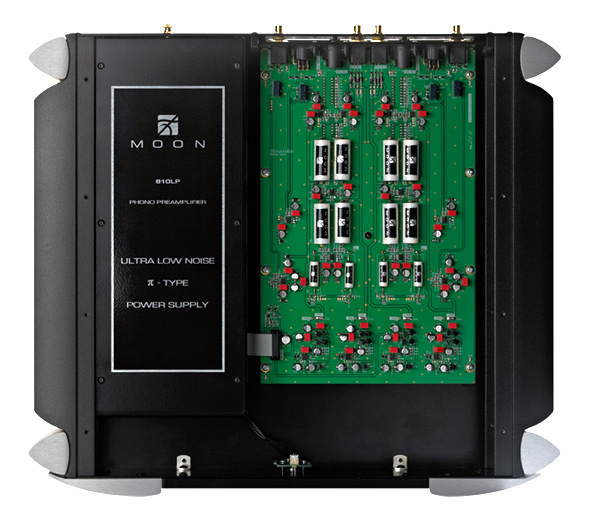 The overhead view reveals a fully discrete design with a massive, shielded power supply. All business here, folks. (inside photo courtesy of Simaudio)
The overhead view reveals a fully discrete design with a massive, shielded power supply. All business here, folks. (inside photo courtesy of Simaudio)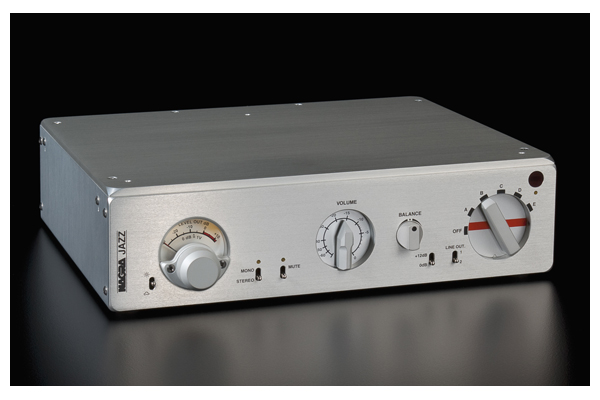 Nagra announced yesterday that they are introducing their new Jazz preamplifier here at the Munich Hi End Show. Named in homage to the legendary Montreux Jazz Festival that Nagra has sponsored for years, the Jazz preamplifier follows in the line of the famous PL-L and PL-P preamplifiers.
Nagra announced yesterday that they are introducing their new Jazz preamplifier here at the Munich Hi End Show. Named in homage to the legendary Montreux Jazz Festival that Nagra has sponsored for years, the Jazz preamplifier follows in the line of the famous PL-L and PL-P preamplifiers.


